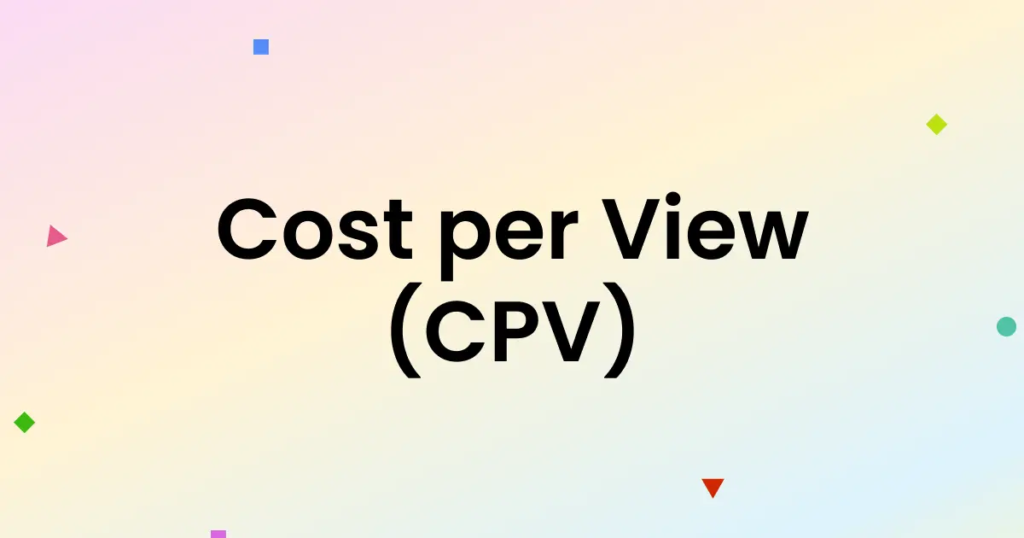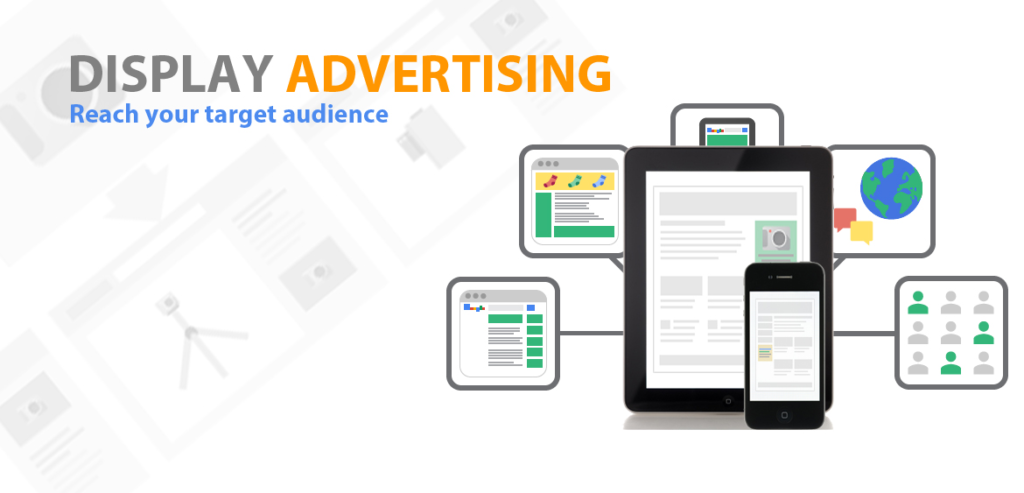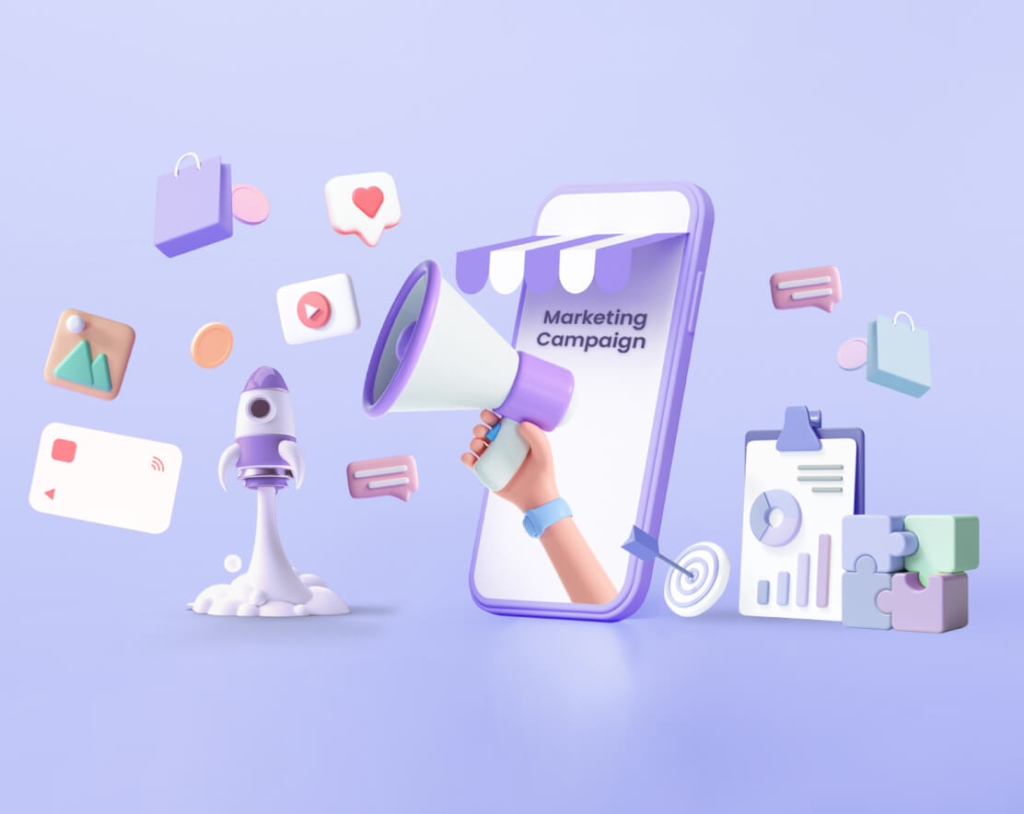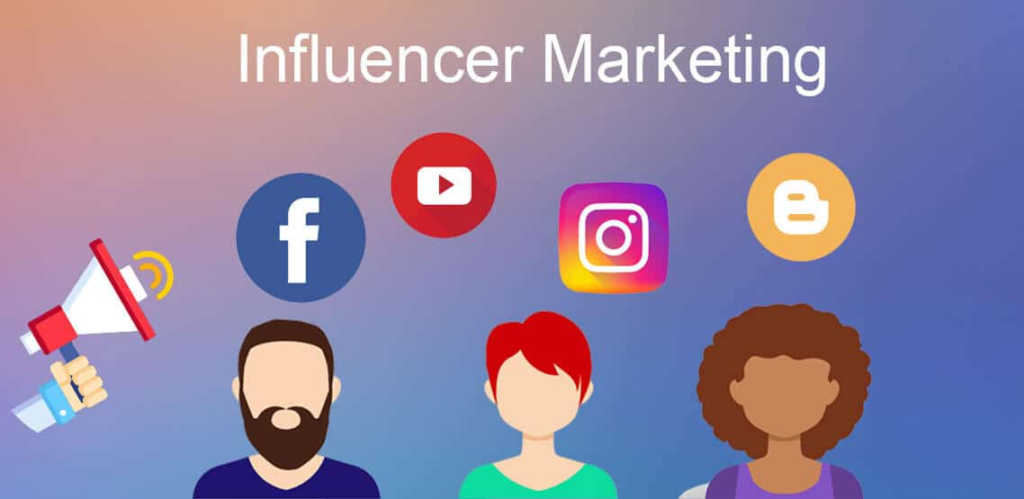Performance marketing is a term that’s becoming more popular in the fast-paced world of digital marketing. It’s getting people, both marketers and business owners, interested. This isn’t just a new word for something; it’s a strategy that could change how companies meet their goals and reach their target audience. Performance Marketing is more than a buzzword—it can change how businesses reach their target audience and achieve their goals. Digital advertising (desktop, laptop, mobile) cost $455.3 billion worldwide in 2021. Statista expects this value to rise to $646 billion by 2024.
This prediction explains the rise of social media advertising, affiliate marketing, email marketing, and, most notably, performance marketing. Performance marketing yields the best results. PPC has a 200% ROI (Study) and returns $2 for every $1 invested.
PPC is used by 65% of small to mid-sized enterprises. Given the importance of digital advertising and SEO, online businesses should not waste effort. You must study performance marketing there. G2S Technology, a leading SEO Company in Jaipur, creates performance marketing strategies that meet the needs of 21st-century businesses in the dynamic digital world. How can new performance marketers feel confident? Let’s explore this idea’s secrets.
What is the concept of Performance Marketing?
Performance marketing involves the various online marketing strategies implemented by businesses. We utilize a variety of marketing strategies and online advertisements to attract high-quality leads. Advertisers compensate publishers when a lead meets the qualifying criteria. Advertisers have the option to pay for different actions, such as generating leads, clicking on links, making purchases, and engaging in similar activities.
Performance marketing is utilized to incentivize desired actions, evaluate their effectiveness, and ultimately enhance return on investment. Publishers can generate revenue by implementing a marketing strategy that enables them to earn commissions based on user actions. Performance marketing provides advantages for both advertisers and publications.
How does Performance Marketing work?
There are three major parts to most performance marketing models: the publisher, the advertiser, and the customer.
- Promos for goods or services can be made by advertisers. What advertisers pay publishers as a commission for sending people to them is up to the advertisers.
- Promos for goods or services can be made by advertisers. The advertiser sets the rate of commission that publishers get for sending people to the advertiser.
- Social media influencers use their websites, blogs, or social media accounts to help get the advertiser’s offer out to their followers.
- The marketer will pay the publisher or influencer a fee every time a customer clicks on the link they shared.
- The advertiser can keep track of how the marketing is going. If publishers use a performance marketing tool or network, they can keep track of their commission earnings.
Also Read: Common ASO Mistakes To Avoid When Promoting Your Game In App Stores
This makes things better for customers, marketers, and publishers since publishers get paid for their work.
Types of Performance Marketing
There are different types of performance marketing, and each has its benefits and traits. These are some common types of performance marketing:
- Cost-Per-Acquisition (CPA): Pay-per-acquisition, or CPA, is when an advertiser gives money to a publisher every time a user does a certain thing on the site. This is the most common type of performance marketing. In this type, the marketer only pays when a certain task is achieved.

- Cost-Per-Click (CPC): Cost-per-click, or CPC, is when ads pay publishers a fee to send people to their websites. The only goal is to get more people to visit the website. For every click on the link or ad, money is sent to the account.
- Cost-Per-Impression (CPM): Cost-per-impression (CPI) is a less popular advertising method. Advertisers pay publishers a fee for every time their ads are shown. This type of performance marketing is less popular because it can’t promise that users will do certain things.
- Cost Per Install (CPI): Advertisers pay publishers for each program installation that comes from their recommendations. This is called cost-per-install (CPI). Popular for ads in mobile apps.

- Cost-Per-Engagement (CPE): Cost-per-engagement, is a way for marketers to pay publishers for every time someone interacts with their ad in some way, like like, share, or comment on it. In social media ads, this type of show marketing is used a lot.
- Cost-per-view (CPV): Every time an advertiser’s video is watched, the publisher gets paid a fee. This type of show marketing is often used in video ads.

Top Performing Marketing Channels
A business can use a lot of different successful marketing channels to get its message out. Advertisers pay when people see or click on their ads through display marketing.
1. Advertising on Social Media Platforms
- Targeted advertising simplifies website traffic growth on some platforms. Brands may enhance website traffic, brand identity, and leads and sales by using Facebook, Instagram, Twitter, and LinkedIn. Use these methods to promote your content and engage customers.
- Social media advertising affords organizations a cost-effective means of connecting with both broad and targeted audiences. Businesses possess the capacity to establish a seamless connection with their intended audience.
- Advertisers are presented with a diverse range of ad formats on social media platforms. These formats comprise sponsored posts, sponsored stories, sponsored events, sponsored videos, and more.
- Advertisers can choose and pay for CPC or CPM ads. Advertisers can target their audience by demographics, interests, behavior, and location.
- Several performance measures advertising can track:
1. Raid
2. Like
3. Note
4. Shares
5. Clicks
6. Sales
7. Check out
8. Full contact form
2. Search Engine Marketing (SEM)
- Search Engine Marketing is when you pay to have ads show up on search sites like Google and Bing. Paid search results are one way that SEM blends native advertising with other types of marketing.
- With this type of marketing, websites are promoted by making them more visible in search engines through paid ads.
- In search engine marketing, paid search advertisements are used to target certain terms and phrases associated with a company or brand. SEM’s primary objective is to increase a website’s visibility in search results, which in turn increases website traffic and revenue.
3. Affiliate Network
An affiliate network is a place where publishers and marketers can connect. Affiliate networks let advertisers set up their programs, and publishers look for programs to support them.
Publishers have to fill out applications for the projects they want to support. Once the work is approved, publishers may be able to choose promotional text that can be used on social media sites or blogs. Affiliate networks let you:
- Use of advertising funds well.
- Product promotion by publishers who have been accepted.
- One place to keep track of sales.
- Part of the service is keeping an eye on compliance.
- Better return on investment.
- Raise awareness of your business.
4. Display advertising

- Companies get paid when people click on or buy something from their display ads on websites or mobile apps. We use programmatic media buying to run ads these days, and they work.
- You can use contextual targeting to your advantage by picking which sites to put your banner ads on. Publishers gather a lot of information about their readers so they can show them ads that are more relevant to them.
- Advertisers can reach the same people all over the web with programmatic display ads.
5. Influencer Marketing

- Utilizing influencer marketing can assist brands in attracting a larger audience and expanding their reach, resulting in increased visibility and return on investment when compared to alternative marketing channels. Utilizing influencer marketing can significantly enhance search engine optimization, return on investment, and overall profitability.
- Influencer marketing powers 86% of marketing campaigns. TikTok, Instagram, Facebook, YouTube, and Twitter influencers have massive followings.
- Influencer marketing can include paid commercials, product reviews, etc. These influencers are trusted by fans, which can boost sales. This marketing can enhance revenues, brand exposure, and target audience reach.
- Influencer marketing reduces business advertising expenditures. This makes it cheaper than paid advertising. The marketing method cuts promotion time and yields faster results. Here are some ideas about influencer marketing:
- 8 times more money can be made from branding and engagement-based influencer marketing efforts than from campaigns.
- Half of marketers say that influencer marketing has the best return on investment (ROI) of all the marketing channels.
- According to research, influencers make about $18 for every dollar that is spent on them to spread marketing messages.
6. Facebook Ads

- Facebook boasts an impressive 3 billion monthly users, making it the undisputed leader in the realm of social networks. According to recent data, Facebook boasts an impressive 67% of daily users. Facebook continues to have a wider audience.
- Facebook lets companies get detailed information and target the correct customers. Facebook gets 10 million active advertisers and generates $28.6 billion per quarter by targeting certain groups.
- Companies that aren’t too responsive and focus on simple conversions like signing up for a service, filling out a lead form, or leaving an email address can succeed with Facebook advertising.
- When it comes to promoting pages and posts on your website or page, Facebook offers a wide variety of advertisers to choose from.
- Ads on Facebook are tailored to specific individuals by taking into account their profile, location, and demographic information.
- Facebook enables the highest return on investment (ROI) by utilizing accurate interest targeting.
- Through the use of advertisements, Facebook enables marketers to retarget consumers.
7. CPE Ads
- Cost per interaction (CPE) ads are a type of online advertising where companies only pay when a user does something like click on an ad, watch a video, or fill out a form.
- Companies that want to get the most out of their advertising budget by only paying for useful interactions might want to look into CPE ads. Because users have to do more to interact with CPE ads than with CPM or CPC ads, they cost more.
- It’s also important to keep an eye on how well CPE campaigns are doing and make changes as needed to make sure the ad is getting the desired response.
- You can use CPE ads in several different campaigns, such as ones on social media, mobile apps, and video ads.
- Cost per engagement makes marketers more flexible and creative, which helps them keep up with market trends.
- Every contact or engagement on social media makes people more aware of a brand.
- CPE makes sure that marketers and the marketing team don’t waste money on ads that don’t do anything. Businesses often pay for ads that get people interested.
Also Read: Digital Marketing Trends 2024: What to Watch for in the Coming Year
8. CPL Ads
- Cost per Lead is a business plan where advertisers pay a fee for every lead that their ad brings in. A possible customer who has shown interest in a product or service is called a lead.
- You want a higher CPL because it means you’ll get better leads and pay less to get a new customer.
- Advertisers need to know how to correctly target their audience and focus on making content that is relevant to keep acquisition costs low and business performance high. Adversaries need to spend time and money on terms that work. Do A/B tests on your current customers and retarget them.
- In business-to-business (B2B) marketing, the goal is to get leads that can be turned into sales.
9. Sponsored Content

- If you’re getting a return on your investment, everything in marketing is fair. Content is also very important in business. Brands can reach their ideal customers and gain their trust by using sponsored material.
- Brands pay to have their product or service shown on social media, websites, and other digital channels. This is called sponsored content. The brand makes the content, which is meant to look like normal editorial material.
- Sponsored material can help spread the word about a brand and reach more people. Reaching more people means getting more people to visit a website, which increases the chances of more sales.
Benefits of Performance Marketing

Performance marketing is an effective digital marketing strategy for any firm. Affiliate marketing is a type of digital marketing in which advertisers compensate publishers (affiliates) simply for completing a certain action, such as generating a lead or making a transaction.
According to a survey by the Performance Marketing Association, organizations that use affiliate marketing have an average return on investment (ROI) of 122%. On average, the implementation of performance marketing has led to a growth of 15% in online sales. eMarketer asserts in an analysis that performance marketing has the potential to decrease a company’s consumer acquisition costs by as much as fifty percent. Among the advantages provided by performance marketing are the following:
- Cost-effective: You pay solely for outcomes; advertising expenses are not included.
- Measurable: A quantifiable objective is the monitoring and evaluation of the campaign’s performance to enhance it.
- Scalable: It can be increased or decreased by requirements and available funds.
- Targeting: An attempt should be made to connect with particular social groupings and groups of interested people.
- Risk-free: Because you only have to pay for the results, this is a risk-free method of testing a new product or market because you only have to purchase the results.
- Affiliate marketing: Affiliate marketing is a form of promotion that involves making use of a network of publications to provide your goods or services to a diverse variety of consumers.
- Increased effectiveness: It is possible to attain increased effectiveness by devoting resources specifically to efforts that yield beneficial results. This will allow for increased effectiveness.
How can a performance marketing strategy be developed?
The following are the main steps in creating a performance marketing strategy:
Set campaign goals
The basic principle of performance marketing is to define goals before a product launch, whether those goals are to increase sales or brand awareness.
Many ad platforms ask you to set your objective before creating an ad or starting a campaign. In addition to other critical success elements, your campaign objectives determine the location and audience to which your ads are directed.
Choosing your digital channel

Avoid putting everything in one basket. Instead, use a variety of marketing channels to increase your campaign’s visibility, reach, and chances of success. Examples of channels that specialize in the type of conversion you need and where your target audience is most likely to be found are social media platforms, affiliate marketing, and native advertising.

So why wait? G2S technology can help you harness the power of performance marketing to grow your business to new heights in 2024 and beyond!
Create and launch the campaign

Gaining a deep understanding of target audiences and the factors that attract them will make it easier to create effective ad graphics, headlines, designs, and timing systems.
The selection of platforms and channels for campaigns is important as it directly impacts technical aspects such as allowed imagery, copy character limits and ad width.
Measure and optimize the campaign

Determine primary sources of traffic through examining metrics and analytics; Later, allocate the advertising budget accordingly. In addition to increasing sales, performance marketing campaigns identify the most effective channels, audiences, and objectives for greater returns on investment.
Also Read: The Role of Social Media in E-commerce SEO and How to Leverage It Effectively
Deal with the shortcomings
There are potential complications and risks to consider. You can potentially minimize initial complexities by focusing your efforts on reputable ad networks and platforms that consistently and ethically address concerns like data privacy and brand safety.
Strategies for Performance Marketing
You can use the following performance marketing strategies for your brand:
Dynamic Remarketing

Businesses can change the ads a customer sees based on what websites they’ve been to in the past. You can start dynamic advertising right away, but here are some things you should think about if you want people to visit your website:
Give people a reason to visit your site again: This remarketing ad should show the product the customer is interested in, but it should also have a strong call to action.
Set a frequency limit on advertising: Advertisements should only be shown a certain number of times per day. To do this, set up a remarketing campaign with a frequency cap.
Influencer marketing

Influencer marketing is a cost-effective technique to reach your target audience on social media. It’s improving and becoming a performance marketing plan. Social networks welcome this new era since it brings them more revenue and delighted marketers.
Instagram wants stars to interact with fans, not reach many. The platform wants to remove “likes.” This matches most brands’ results-based strategy.
Influencer marketing can boost productivity if:
Audit your social media accounts using the correct tools. Check if an influencer changes behavior beyond their following count. That is the whole objective of striking.
Consider the categories of visitors to each site and choose the one with the best value.
Advertising on Amazon

Amazon advertising offers a great opportunity to increase targeted website visitors. You may advertise and sell on Amazon. Do these to grow your business:
Consider product profitability. Add your ACoS and product-level profit margin to determine how well your Amazon advertising is doing in business data. A key indicator of Amazon advertising is the advertising cost of sales (ACOS), calculated by dividing advertising costs by sales.
You can reduce waste with negative keywords. Amazon’s keyword matching can be tough, so your brand may appear in unrelated queries. Use negative keywords to exclude search queries you know are unrelated to your business.
Stories
Stories are short updates with pictures that users can share. They disappear from their profile after one day. It began with Snapchat, and Instagram quickly picked it up. The format of the story is that it will disappear from the profile in 24 hours and will be image-based posts that will keep users interested.
You can make the best stories by:
- Use simple language: Avoid using corporate language. Give your audience a human touch so they feel connected.
- Keep users engaged: Avatars, stickers, polls, and videos are tools that keep customers engaged for a longer amount of time.
What are the Performance Marketing KPIs
Performance marketing KPIs assess campaign success. Common performance marketing KPIs:
- Cost per acquisition (CPA): CPA estimates the cost of obtaining a customer, such as a click, lead, or transaction. Low CPA means cheaper campaigns.
- Conversion rate: The percentage of website visitors who buy or fill out a form. Higher conversion rates suggest better campaigns.
- Return on ad spend (ROAS): This metric compares campaign revenue against costs. Higher ROAS means more profitable campaigns.
- Click-through rate (CTR): This number measures the percentage of people who click on an ad after seeing it. Higher CTR suggests more engaging and relevant ads.
- Cost per click (CPC): Measures ad click costs. Cost-effective campaigns have lower CPC.
- Campaign revenue: This indicator quantifies campaign revenue. More revenue means better campaigns.
- Lifetime value (LTV): This metric assesses a customer’s lifetime value to the business. Customers with higher LTV are more valuable.
- Engagement rate: This metric measures campaign content engagement, including likes, shares, comments, and other interactions. More engagement means better campaigns.
Examples of Performance Marketing
The following are instances of effective performance marketing:
Nykaa

The fashion and apparel retailer headquartered in Mumbai initiated performance marketing by distributing its products via mobile application and website. The brand distributes cosmetics and skin care advice and promotes its products via social media platforms such as YouTube. Nykaa TV is the moniker of the brand’s YouTube channel. The channel serves as a sales driver for the brand by providing users with product recommendations and instructional videos.
Netflix

To generate significant audience engagement, Netflix, the preeminent over-the-top (OTT) streaming platform, expeditiously generates questionnaires and thought-provoking inquiries that simulate user responses. A clever retort from Netflix may earn you five minutes of notoriety on social media. This encourages additional engagement from the audience regarding the post.
G2S Technology: Your Trusted Digital Marketing Company in Jaipur

G2S Technology is a well-known Search Engine Optimization (SEO) company in Jaipur that focuses on making custom performance marketing plans to meet the specific needs of businesses that operate in a digital world that is always changing. We offer a lot more than just a Local SEO Company in Jaipur. We also do partner marketing, search engine optimization, and a lot more.
Our team has a deep understanding of performance marketing and how it can make a big difference for your business by bringing in focused traffic, high-quality leads, and the best return on investment. Our skilled professionals are dedicated to developing new ways to help your business reach its goals, so you can see results and enjoy long-term success.
Conclusion
In the future, internet marketing will be based on how well it works. This is a great way to reach the people you want to reach and reach your goals. Performance marketing is something that every business should think about if they want to get more sales, clicks, or leads.
Also Read: Boost Your ROI: Harnessing the Power of AI Tools in Digital Marketing
There is no one way to do things that work every time. The target market and goals decide which brand is the most effective. For help with performance marketing, get in touch with us.
Companies might find it very helpful to work with a digital marketing company in Jaipur like G2S Technology that is both knowledgeable and trustworthy when they are trying to figure out how to get around in the digital world. You can get the most out of performance marketing and reach your business goals with our help thanks to our knowledge, personalized approach, and constant dedication to quality.
Quick Contact Us :
Call/WhatsApp: +91-7976373846
Email: info@g2stechnology.com





